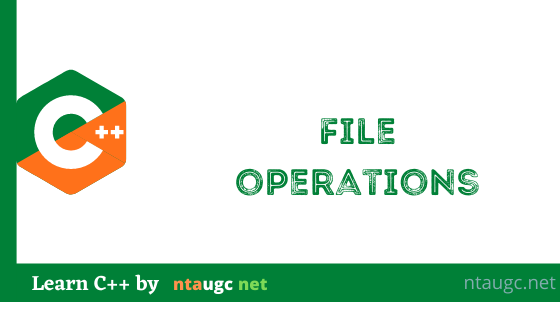C++ allows us to perform operations on files.
We can read contents of a file and even write some content in the file through a C++ program.
Isn’t that awesome?
To perform operations on files, C++ provides several built-in functions.
These functions are all declared in fstream header file.
To perform operations on file, the fstream and iostream header files should be included in the program.
Opening a file
NO, you won’t need any unlocking charm to open the files.
To open a file, open() function is used
open() opens an existing file.
If the file is not found it creates a new file.
The open() function takes in two parameters – name of the file and mode of opening.
The mode of opening can be any of the following:
in – read mode.
out – write mode.
app – append mode. It searches for the last character in the file and starts writing from there.
trunc – If the file exists its content will be truncated before opening.
Let’s see how open() is written
open(“file_name”, ios::mode);
So, if we want to open a file named programming.txt in read mode. We will write
fstream newFile;
newFile.open(“programming.txt”, ios::in);
Where newFile is an object of type fstream.
Reading a file
To read a file we use the >> operator.
But instead of cin, we use the fstream object.
fstream newFile;
newFile>>whatever;
Where whatever is the variable in which the whole read data will be stored.
So, if we want to read a file named programming.txt. We will write
fstream newFile;
char data[500];
newFile.open(“programming.txt”, ios:in);
newFile>>data;
Thus, we have successfully read the file programming.txt.
Writing a file
To write in a file we use the << operator.
But instead of cin, we use the fstream object.
fstream newFile;
newFile<<whatever;
Where whatever is a variable which contains the data to be written in the file.
So, if we want to write some text in a file named programming.txt. We will write
fstream newFile;
char data[500] = “Hello World”
newFile.open(“programming.txt”, ios:out);
newFile<<data;
That’s it. “Hello World” will be written to the file.
Closing a file
Now, we know how to open, read and write a file.
After all these operations are successfully carried out, we need to close the file.
To do so, fstream provides us close() function.
To close a file we write
fstream newFile;
newFile.close();
So, to close a file named programming.txt. We will write
fstream newFile;
newFile.open(“programming.txt”);
newFile.close();
It will close the file programming.txt.
To Summarize
- open() is used to open an existing file and if the file is not found it creates a new file.
- In, out, app, trunc are various file open modes.
- >> is used to read data from a file.
- << is used to write data to the file.
- close() is used to close a file.












